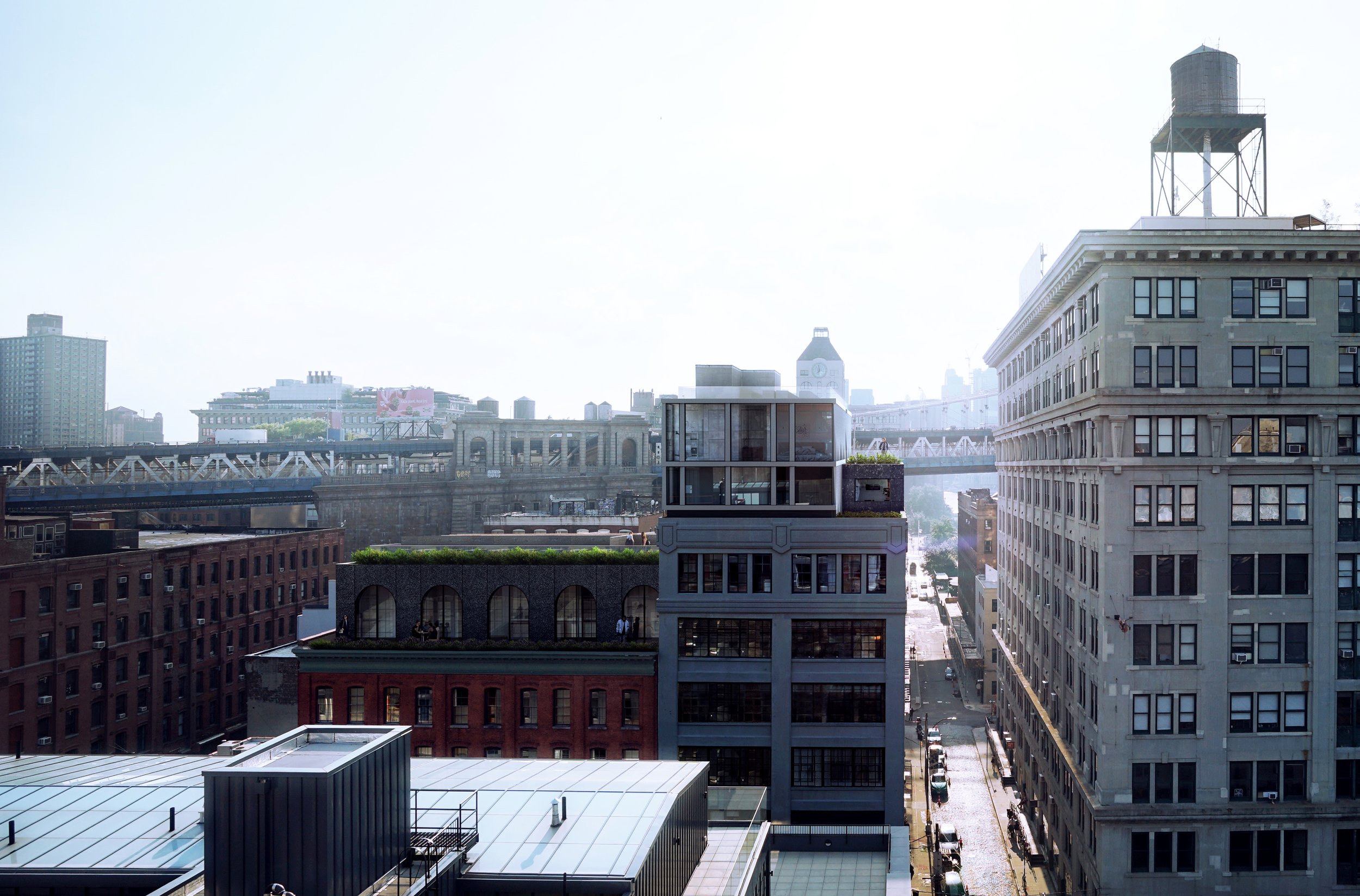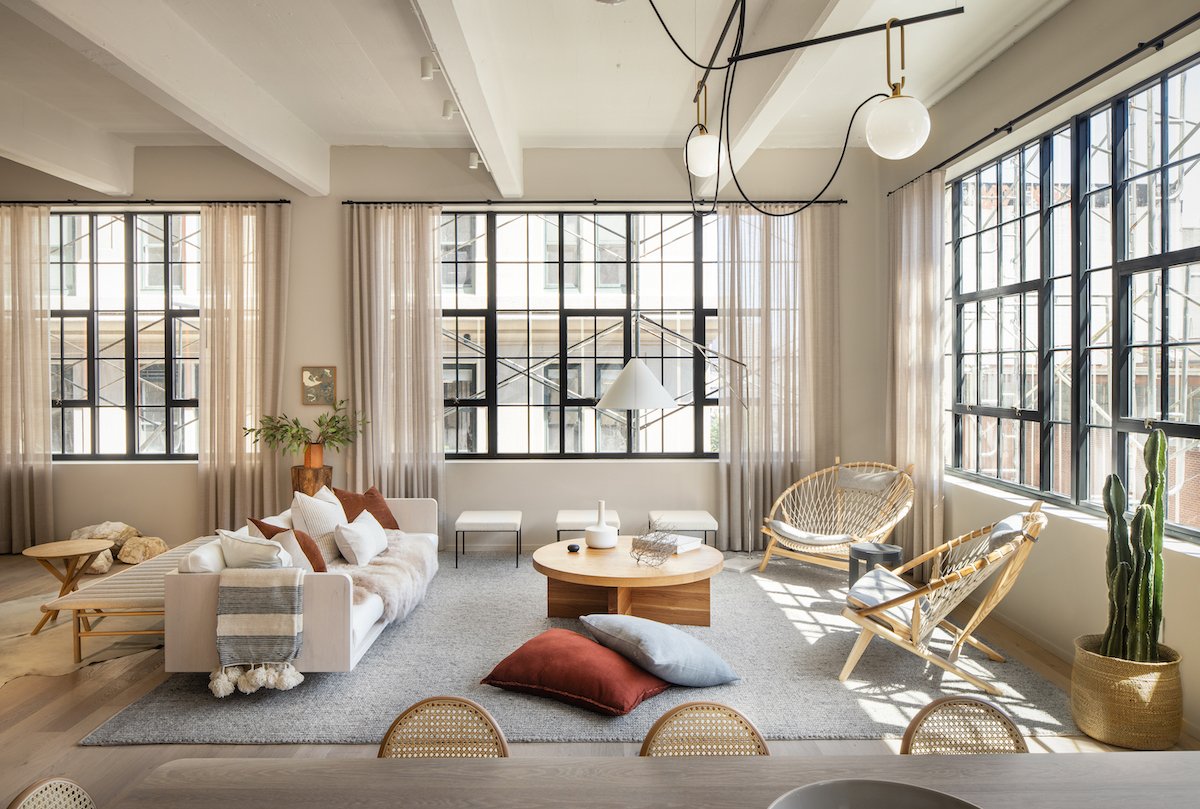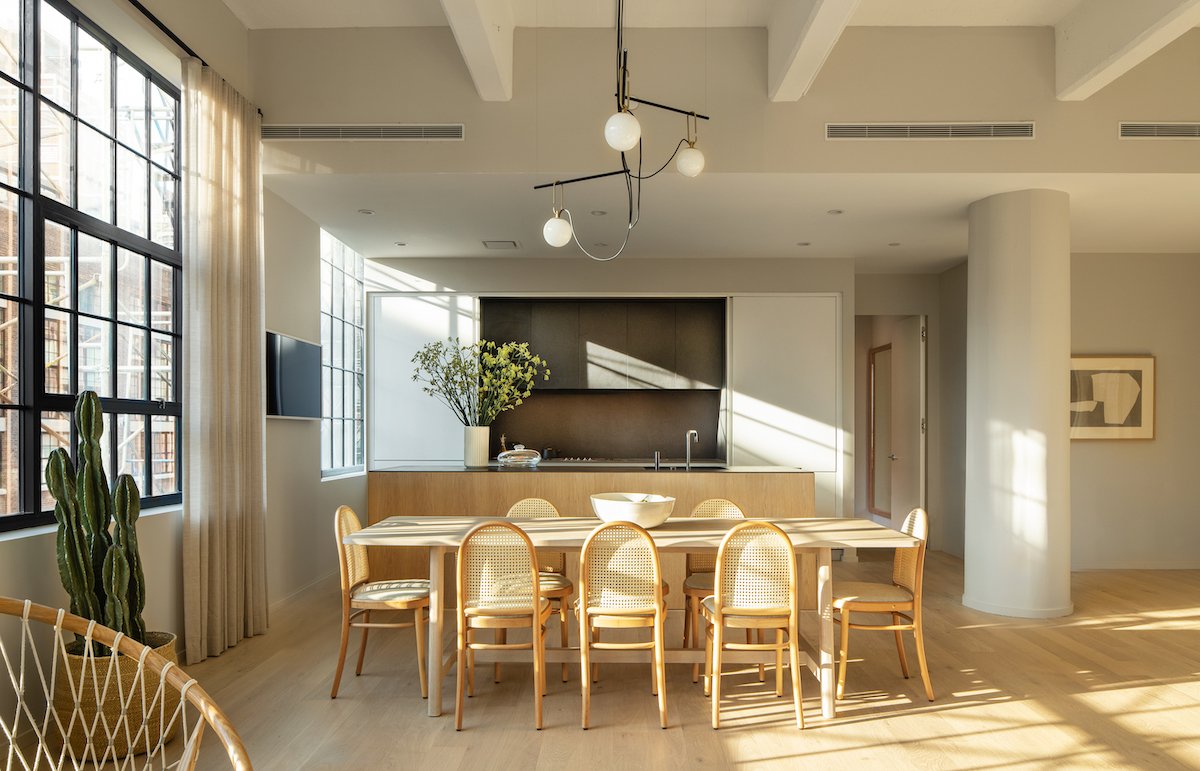Tara Mrowka
“The amazing thing about architecture and building is that it the field is constantly evolving and changing due to new technologies and innovation in materials. With each project comes new challenges and opportunities to learn and grow in the field, and as an individual.”
#WomenWhoBuild meet Tara Mrowka,
Tara is a licensed architect and the Senior Director of Sales and Marketing at Alloy, an architecture-development firm based in DUMBO, Brooklyn. During her nine year tenure with Alloy, Tara has worked on projects such as 100 Flatbush, 168 Plymouth, and 1 John Street. Prior to joining Alloy in her current role, Tara worked at the NYC Department of City Planning and as a real estate consultant. She holds a B.A. in Urban Studies and Economics from New York University and a Master of Architecture from Parsons School of Constructed Environments.
ArchNative sat down with Tara (virtually of course) to discuss her journey in the Built Environment, her move from the public to the private sector, and how she ensures that she is constantly growing in her role.
Tell us a little bit about yourself and your journey in the Built Environment?
My interest in architecture began in 2000 when I moved to New York City to attend New York University. I became enamored with the city; its complexity, diversity and everchanging nature. I was not entirely sure of what I wanted ‘to be’ at that point, but I knew it would involve cities. I ended up majoring in Urban Studies with a minor in Economics and landed my first real job working at the NYC Department of Planning in the zoning and urban design division. Working there opened my eyes up to the length of the bureaucratic process and the fact that some of the projects happening at the time, like the Highline and the 9/11 Memorial would not be realized for at least a decade.
100 Flatbush
I went on to work in the private sector at a real estate consulting start up where I had learned a lot about real estate development but wanted to expand my skills. I waivered about going back to grad school for planning or architecture and ultimately enrolled myself in Harvard’s Career Discovery summer intensive architecture program. That experience cemented my passion for architecture. Architecture’s limitless potential, the ability to use design to turn ideas into spaces, and solve problems that cities face, excited me. I went on to get my Master of Architecture at Parsons School of Constructed Environments. New York City was our laboratory, and the primary focus was on making with the notion that through good design, we can create new ideas and solutions for current urban issues.
My grad school experience taught me that architecture is multifaceted and is most successful when working with a group of people who all bring their varied strengths to the table. Entering my masters with little architecture background, I was initially concerned that I would be at a disadvantage, but I learned through hard work that it was possible to learn, grow, and gain confidence in my ideas and skill set. My real-world experience had given me a different lens to study architecture through.
What was your first introduction to the field?
My role at the NYC Department of Planning in the zoning and urban design division was my first introduction to the field. In my final year of grad school at Parsons, I was offered a job at Alloy, where I have been for 9 years, as my experience in both real estate and architecture was the perfect fit for their practice model. Alloy was only a few years into its existence at the time and I was excited to be a part of a small team with big ambitions for architecture and development. I learned very quickly how buildings are built through real on-site experience and seeing projects from concept to completion.
You had previously worked for the NYC Department of City Planning, what compelled you to make the shift from the public to the private sector?
Wanting to understand the private side of development, I ended up working at a real estate consulting startup in Brooklyn for a few years during the mid-2000s real estate boom. I ended up learning a lot about real estate and development, but I knew I wanted to continue my studies and move on to making a more meaningful and direct impact in the city that I grew so much to love.
What drew you to pursue it as a career?
Many of my colleagues at the NYC Department of Planning were trained in architecture or architects themselves and it became increasingly clear to me the impact that buildings and major urban projects had on the culture and vibrancy of a city. I wanted to have more leadership and control over that process and ultimately found that working for Alloy. As the architect and developers in the process, we can not only design our buildings but can shape the impact our projects have on the city and surrounding neighborhoods as well.
What does your role of Senior Director of Sales and Marketing entail? What does your day to day look like?
As an architect and senior director at Alloy, I manage various stages of the design and development process and oversees all marketing and sales efforts. Here at Alloy, we tend to be nimble and can work on various aspects of the development process. My day to day varies depending on what stage of the development process we are in, but it can include everything from meeting a prospective buyer on a construction site for a tour to doing market research and designing layouts for a new project.
Above Photos: 168 Plymouth ( Interior Photos by: Pavel Bendov / ArchExplorer
In your career so far, what has been the most interesting project you have worked on?
I am proud to have lent a hand in shaping what Alloy has become today and the impact our projects have had on our surrounding communities. We like to think of ourselves as thought leaders in the industry and challenge our peers in both the architecture and development fields to make positive contributions to the built environment. 100 Flatbush, our next development in Downtown Brooklyn, will be the city’s first all-electric skyscraper and first passive house schools. It is setting a new bar for development as one of the most sustainable blocks in Brooklyn. Its scale, potential for positive impact, and mixed-use nature make it one of the most interesting projects I have worked on in my professional career and I am very excited to see it come to life.
One additional highlight was my first built project. It was through the Parsons Design Workshop program; we not only designed and built two pool pavilions for the Highbridge Pool in Washington Heights, but we helped raise funds to complete the project through Kickstarter. The project had real-life design challenges and budget issues but our small team of 10 students and 2 professors were able to pull off the design and approvals in one studio and build the entire project in two summers all with student labor. Not only did we realize the value in collaboration and teamwork, but we also learned about construction and how things get built in the field. Even more satisfying was the smiling faces of the community. Our design had a real impact on the availability of public recreational space, and it served a community in need.
How do you ensure that you are constantly growing in your role/position?
The amazing thing about architecture and building is that the field is constantly evolving and changing due to new technologies and innovation in materials. With each project comes new challenges and opportunities to learn and grow in the field, and as an individual. Making sure to step away from your desk and walk around your construction sites is another important tool to get the full understanding of how buildings come together. The AIA continuing education program has also created great lectures and workshops to keep up to date on the latest products and techniques in the field.
1 John Street
What has been your proudest accomplishment so far?
As architects and developers at Alloy, we all believe in engaging with the neighborhoods where we are working. Our goal is for our projects to make a positive impact on their surrounding communities. Whether it is a space that is donated to the public, such as the annex we designed at 1 John Street for the Brooklyn Children’s Museum, a site activation prior to construction, or creating a donor advised fund to provide a sustainable model of support for local communities in need as we have done on our most recent project, 168 Plymouth. Our mission at Alloy is to create a more beautiful, sustainable, and equitable Brooklyn.
What is one piece of advice you have for women entering the field?
My advice to those just starting a career in architecture would be to expand your options beyond just a traditional architecture practice. There are so many possible avenues for you to exercise your skills, to learn, and to grow. My advice for women would be to make your voice heard and be confident in expressing your ideas. Lastly, as architects, it is important to keep in mind that the buildings and spaces we create will be around for a very long time and it is our responsibility to make sure that we make every effort to ensure their resiliency.







